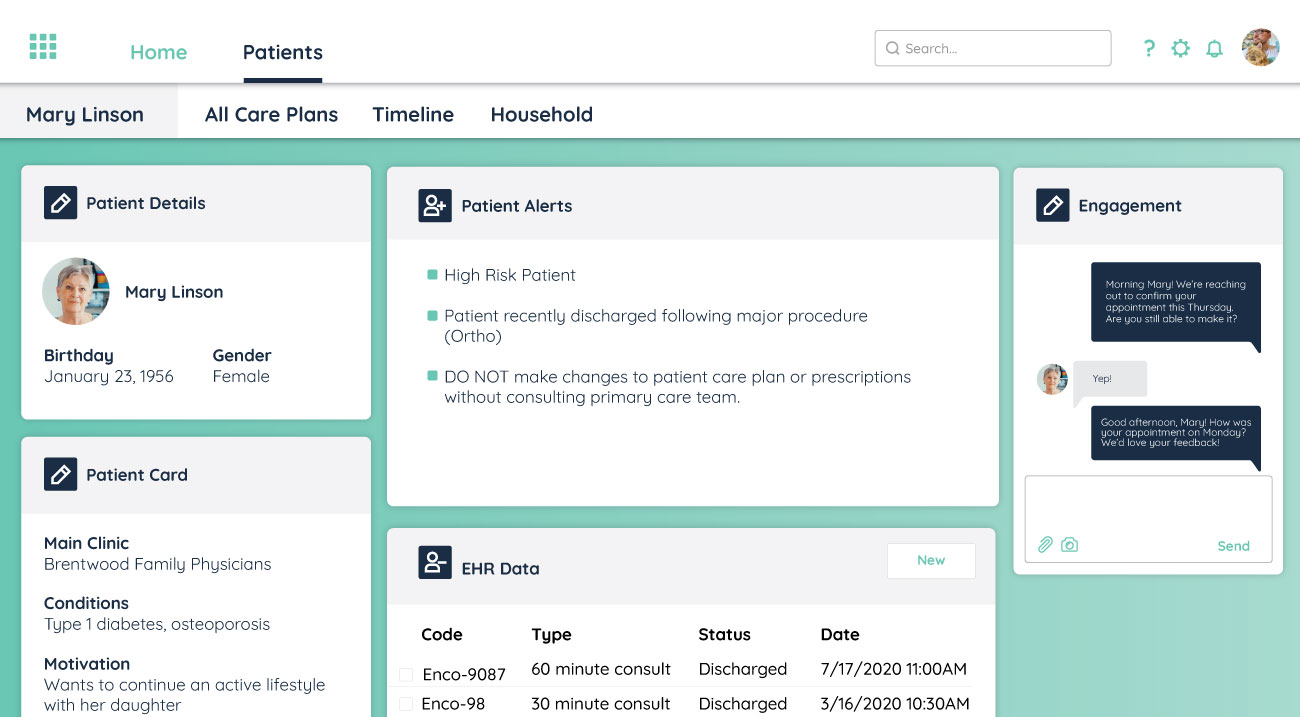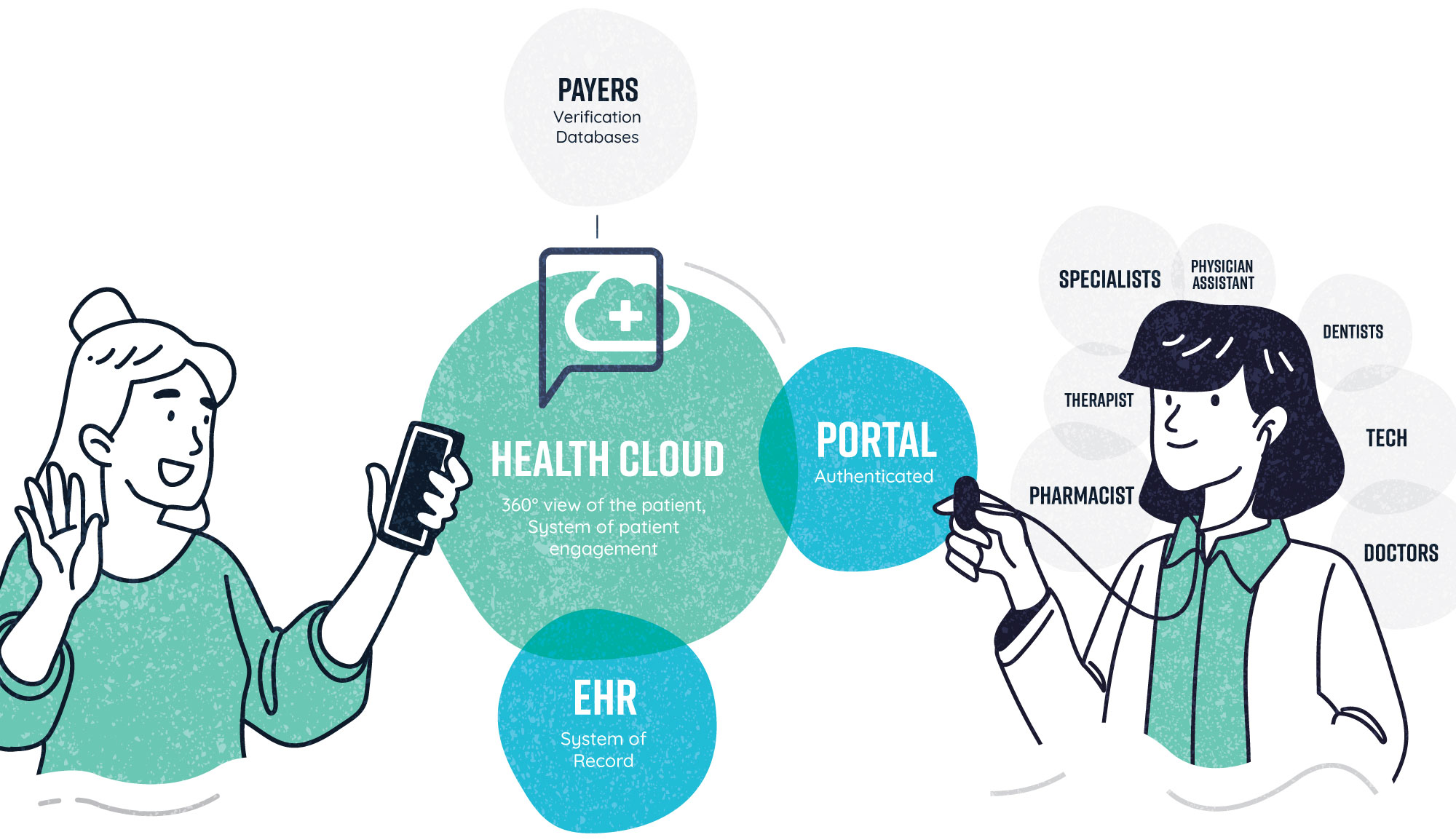Salesforce Health Cloud is arguably the most robust CRM ever built for healthcare. It is the ideal patient management software, allowing for more personalized connections, collaboration across health teams, integration with EHRs, and more. But for those first getting started on the platform, the amount of information and pure power can be daunting. Don’t fear – we’ve captured the highlights for you, including core capabilities and key terms, to help you hit the ground running
Salesforce Health Cloud: The 30-second overview
What exactly is Health Cloud? In a nutshell, it builds and expands upon all of the core features of the Salesforce CRM with capabilities and features designed exclusively around the needs of patients, healthcare providers, and payers.

It gives healthcare professionals the tools they need to collaborate efficiently. It also helps care team members understand patients better so they can provide truly personalized medicine. It even provides essential functionality for payers and insurance companies.
Now that you have the 30-second overview, let’s dive into some ways Salesforce Health Cloud can help improve the patient and provider experience in your healthcare organization.
Salesforce Health Cloud Specific Terminology
Having a basic understanding of Health Cloud terminology will help you navigate the platform with ease. Here are some need-to-know terms you’ll master in no time:
- Care Team. Think doctors, nurses, medical assistants, health navigators, even administrative professionals. The care team is made up of people who interact with the patient at some, and sometimes many, points of his or her journey. In Salesforce Health Cloud, Care Team may also be referred to as a Case Team, because they have access to the patient case.
- Provider. Providers are a subset of the care team. These are the people or companies that perform the healthcare service, such as a doctor or the health system in which she works.
- Payer. Payers handle financial and operational aspects of providing healthcare. Most often payers are insurers or provider networks.
- EHR. The electronic health registry, which holds a patient’s electronic health record.
- HL7. Health Level Seven International, or HL7, is a standards-development organization. They create the HL7 Standards, which are formats and definitions developed specifically for the medical industry. They are used for sharing and developing electronic health records (EHRs).
Here’s how all those terms come together in a Penrod Salesforce Health Cloud Implementation






